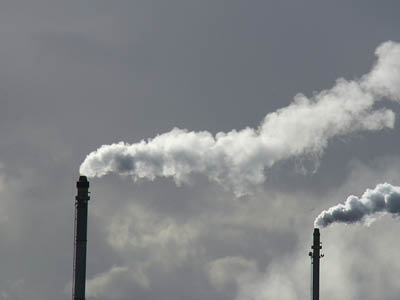Research Brief
Future climate scenarios for South Africa
The importance of mitigating emissions
More intense climate changes are expected in South Africa if GHG emissions are not constrained.
Increased GHG emissions are likely to result in increases in average annual surface temperatures and higher evaporation rates.
Average precipitation levels across South Africa are uncertain, with both increases and decreases being possible.
Potential impacts differ among regions within South Africa, particularly in the case of precipitation with areas along the west coast particularly affected by drier, warmer conditions.
Rising levels of global greenhouse gas (GHG) emissions have led to an increase in the world’s average surface temperature, and further increases are expected. As a result, significant changes may occur in precipitation and sea levels, and more storms and severe weather events may be seen. Assessment modelling can help shed light on how different scenarios may impact South Africa and cause changes to precipitation, evaporation and temperature — conditions which may have implications for the country’s economic growth and social welfare.
Estimating climate change impacts in South Africa
The MIT Integrated Global Systems Model can be used to produce probabilistic projections of temperature and precipitation for specific zones. Two global climate scenarios spanning until 2050 are considered for South Africa: unconstrained GHG emissions, in which policies fail to constrain emissions growth over the next 35 years; and stringent mitigation, where aggressive GHG emissions policies limit CO2 concentrations to levels consistent with a global average temperature rise of about two degrees Celsius.

Temperature, evaporation, and precipitation affected if emission levels continue to grow
Significant differences in temperature, precipitation, and evaporation are expected across sub-regions in South Africa. Under an unconstrained emissions scenario, the annual temperature is expected to increase by a minimum of 1.0 or a maximum of about 3.0°C by 2050, with the most likely increase in the range of 1.5–2.0°C.
Hotter temperatures translate to more evaporation. Without mitigation an increase in evaporation of up to 4.7% may occur,, which would mean that less moisture is available for use for the same level precipitation. Changes in average annual precipitation range between -12.5% and +20.6%, reflecting the difficulties in predicting precipitation outcomes. However, results do point robustly towards a reduction in average annual precipitation in the south-west of South Africa including the west coast, the Berg River, and the Breede River catchments.

Stringent emission policies expected to prevent largest climate effects
Under strict global emissions policies, a smaller increase in temperature is expected ranging from about 0.5–2.0°C, with the likely increase being around 1°C across all regions. Climate change effects on precipitation according to this scenario would also be smaller, ranging between -9.4% and +15%.
Curbing the effects of greenhouse gases on South Africa’s climate
Overall, increased greenhouse gas emissions will have an impact on the climate of South Africa, though targeted policies can mitigate their effects. At the national level, increases in average annual surface temperatures and evaporation can be expected with high confidence. Changes in precipitation are far more uncertain and may affect regions differently.
Further research should be done to analyse climate change impacts in some regions, including poverty-dense areas which may be less resilient and may struggle to cope with changes.
GHG mitigation policies can help avoid most extreme impacts on South Africa’s average temperature and precipitation.
Further detailed analysis is needed on areas of high risk, such as the west coast — the primary producer of high-value exported agriculture crops — where drier, warmer conditions are expected. Changing conditions along the eastern part of the country may also cause concern, as these areas experience high poverty levels.
 Join the network
Join the network